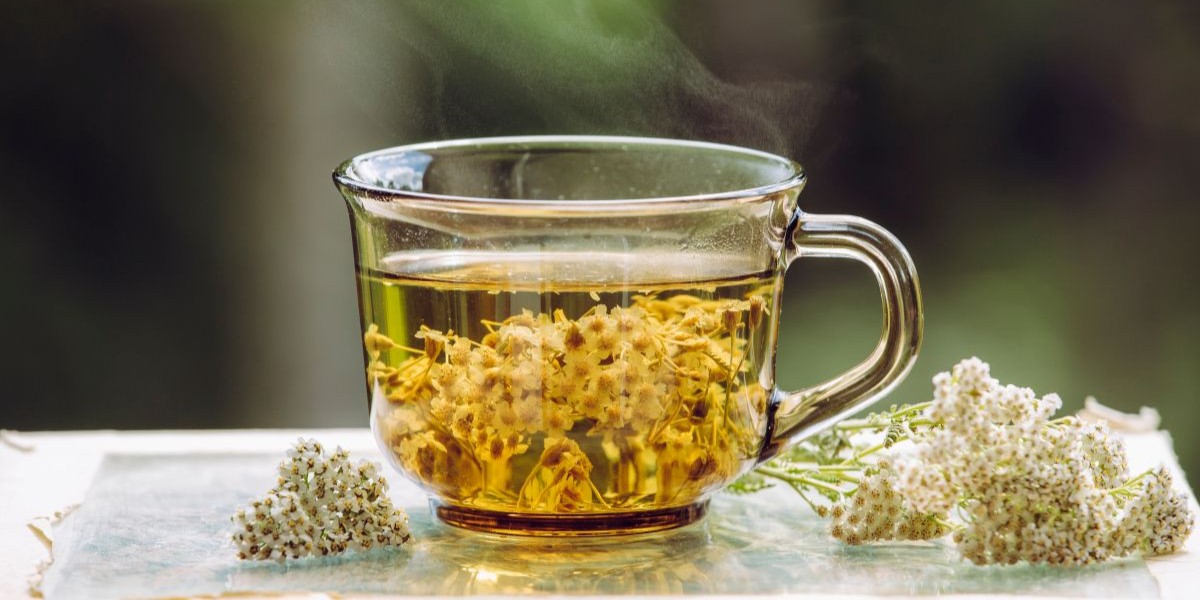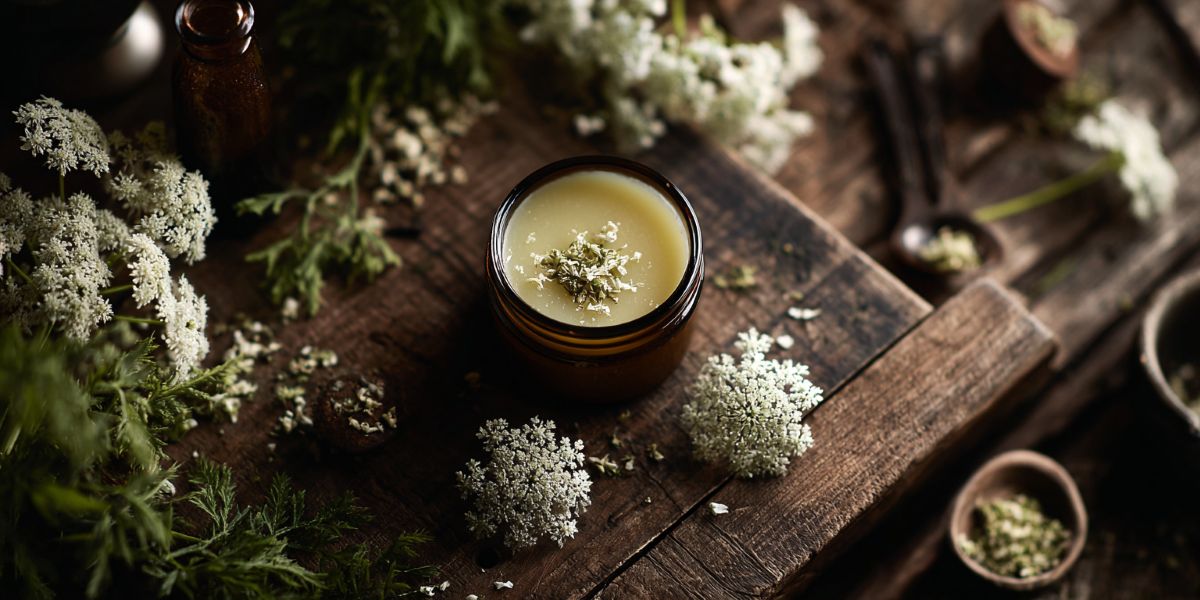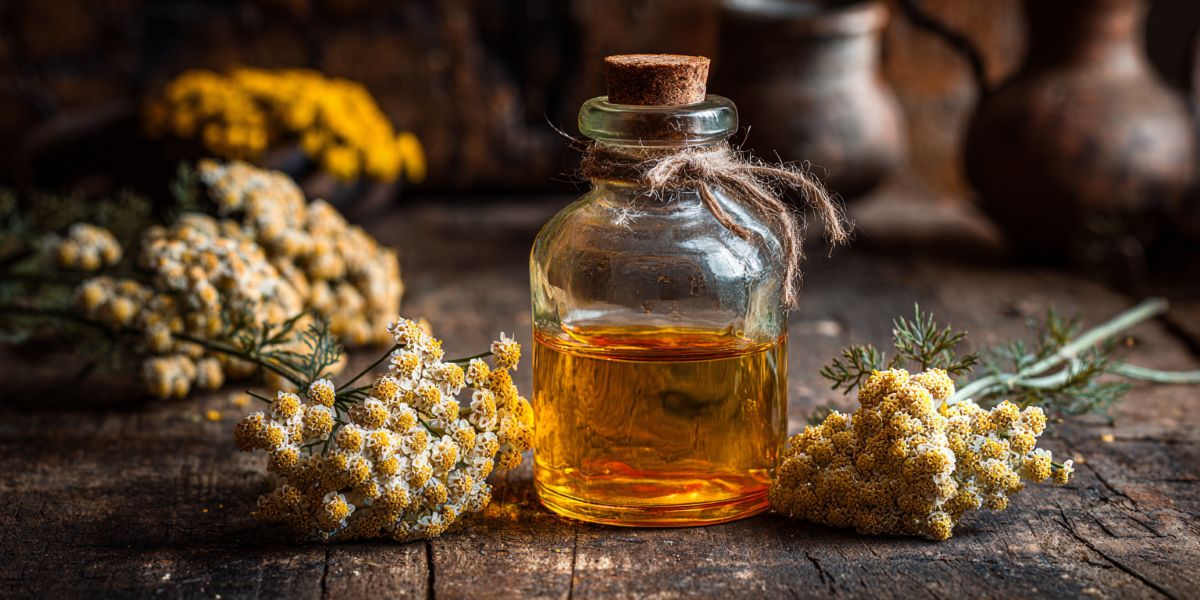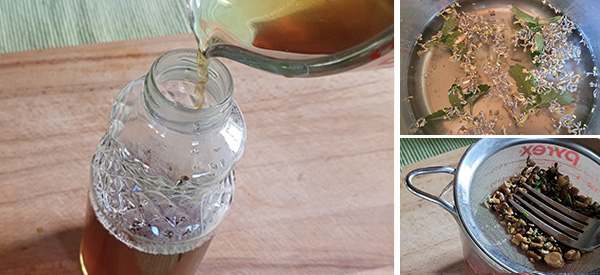
Yarrow Medicinal Uses: A Complete Guide to This Ancient Healing Herb
For centuries, yarrow (Achillea millefolium) has been a cornerstone of herbal medicine. Known for its feathery leaves and clusters of white flowers, this hardy plant has served as a remedy for wounds, fevers, digestive complaints, and more. Even today, many herbalists regard it as one of the most versatile plants in natural medicine.
If you’ve ever wondered about yarrow medicinal uses or exactly how to use yarrow medicinally, this guide will give you both the history and practical steps to bring this ancient remedy into modern life.
The Healing Tradition of Yarrow
Yarrow’s reputation goes back thousands of years. Its very name—Achillea—comes from the legend that Achilles used it to treat the wounds of his soldiers. Roman soldiers carried it into battle, and Native American healers turned to it for fevers, toothaches, and skin issues. This is a plant with a pedigree that stretches across cultures and continents.
What made it so valued? Yarrow contains flavonoids, tannins, and volatile oils that give it antimicrobial, anti-inflammatory, and astringent properties. This makes it useful for stopping bleeding, reducing fevers, calming digestive issues, and soothing skin irritations. In fact, we talked about 50 ways to use yarrow in the past. In the days before pharmacies, a patch of yarrow in the meadow was the medicine cabinet.
Even as modern medicine advanced, yarrow never truly disappeared. Herbalists and even concierge doctors like Dr. Hubert kept its tradition alive, and today science is beginning to confirm what folk healers knew all along—this is a plant with real, measurable effects on the human body.
Beyond its physical benefits, yarrow also carried symbolic and spiritual weight. In some traditions, it was considered a protective herb against evil spirits or bad luck. Others used it in rituals for courage, healing, or divination. These cultural layers remind us that plants were not just medicine—they were woven into the very fabric of life and survival.
Yarrow’s resilience in the wild mirrors its resilience in tradition. It thrives in poor soil, withstands harsh conditions, and continues to grow even after being cut back. Perhaps this is why so many cultures associated it with strength and endurance—it is a healer that refuses to fade.
 Yarrow Medicinal Uses
Yarrow Medicinal Uses
Yarrow’s range of uses is wide, making it one of the most versatile herbs you can grow or keep in your medicine chest. Here are some of its most important applications:
1. Wound Healing
Fresh yarrow leaves were once crushed and applied directly to cuts to stop bleeding and prevent infection. Its astringent qualities help constrict blood vessels while its antimicrobial compounds reduce the risk of infection. This is why it earned the nickname “soldier’s herb.”
Related: 5 Herbal Antibiotics You Can Use To Fight Infection
2. Fever Reduction
Yarrow tea has long been used to promote sweating, which helps lower fevers. This diaphoretic property made it a trusted ally during flu season or outbreaks of illness.
3. Digestive Aid
Taken internally as a tea, yarrow can help soothe cramping, indigestion, and bloating. Its bitter compounds stimulate digestion and bile production, making it particularly useful after heavy meals.
Related: Herbal Anti-Bloating Shots
4. Women’s Health
Yarrow has been used traditionally to regulate menstrual flow and ease cramping. Its balancing effect on circulation and inflammation makes it a gentle option for menstrual discomfort.
5. Skin and Inflammation Relief
Applied topically as a salve or compress, yarrow calms rashes, insect bites, and other minor irritations. It has been used in ointments for centuries to restore damaged or inflamed skin.
Related: The Native American Remedy For Mosquito Bites
Yarrow’s medicinal uses extend even further. Some herbalists recommend it for varicose veins and circulation problems, as it helps tone blood vessels. Others value its mild sedative qualities, noting that a warm yarrow infusion before bed can help relax the body and mind.
It’s important to recognize that yarrow is not a “cure-all,” but rather a reliable ally that addresses many small ailments effectively. In survival situations or in households that favor natural remedies, its versatility makes it indispensable. Few plants offer such a wide spectrum of benefits from a single species.
 How to Use Yarrow Medicinally
How to Use Yarrow Medicinally
Knowing the plant’s history is valuable, but the real question is: how do you use yarrow medicinally today? Fortunately, this hardy herb lends itself to many simple preparations:
- Yarrow Tea: Steep 1–2 teaspoons of dried yarrow flowers and leaves in hot water for 10 minutes. Drink for fevers, colds, and digestive upset.
- Poultice: Crush fresh leaves and apply directly to cuts, scrapes, or insect bites to stop bleeding and reduce irritation.
- Tincture: Alcohol-based extracts capture yarrow’s active compounds and provide a long-lasting remedy. These can be used for digestion or circulation support.
- Salve or Oil: Infuse yarrow in oil and blend into salves for skin issues such as rashes, eczema, or inflammation.
Yarrow can also be combined with other herbs for greater effect. For example, blending it with elderflower and peppermint in a tea creates a classic remedy for colds and flu. Pairing it with chamomile enhances its calming properties, while mixing it with calendula strengthens its skin-healing benefits. These synergies reflect the way traditional healers rarely relied on one plant alone—they built remedies through careful combinations.
Related: The Best Tea for Colds: Soothing Brews to Help You Feel Better Fast
For practical home use, yarrow is best kept in both fresh and dried form. Fresh leaves and flowers are invaluable for immediate poultices, while dried yarrow stores well for teas and tinctures. Keeping it on hand ensures that whether it’s a fever, a cut, or an upset stomach, you have an herbal solution ready to use.
The Yarrow Dilemma
You can forage yarrow almost anywhere – roadsides, meadows, even vacant lots. It’s got distinctive feathery leaves and flat-topped white flower clusters. But here’s the catch: yarrow has some dangerous lookalikes, especially poison hemlock, which can literally kill you. Plus, you need to harvest it at just the right time (when it’s flowering) for maximum potency.
Even if you nail the identification and timing, making your own tincture is a whole other challenge. You need the right alcohol percentage, proper ratios, weeks of extraction time, and constant monitoring. One wrong step and you’ve wasted weeks of work on something that might not even be effective.
I used to try making my own until I discovered Nicole’s Apothecary. She’s a PhD herbalist who lived with the San Bushmen and survived 57 days alone in the wilderness using plant medicine. Her Yarrow Tincture is incredibly potent, properly extracted, and honestly costs less than what I’d spend on materials to make my own inferior version.
Right now she’s offering 25% off when you buy 3 or more tinctures. If you want yarrow that actually works without the guesswork, this is your best bet.
Precautions and Considerations
While yarrow is generally safe, there are some cautions. Pregnant women should avoid it, as it may stimulate uterine contractions. People allergic to ragweed or daisies may also react to yarrow. And as with any herb, moderation is essential—more is not always better.
Another important consideration is interaction with modern medicine. Yarrow can thin the blood slightly, so those on anticoagulant medications should avoid it or use only under professional guidance. It may also increase sensitivity to sunlight in some individuals, so topical use should be followed by caution if you plan to spend time outdoors.
Yarrow also contains thujone in small amounts, a compound that in very high doses can be toxic. While normal preparations are safe, this is a reminder of the wisdom our ancestors practiced: respect the plant, use it in moderation, and observe your body’s reactions carefully.
These precautions don’t diminish yarrow’s value—they simply highlight the importance of using it with the same care and reverence that healers have shown for centuries. Plants are powerful, and yarrow is no exception.
Final Thoughts
Yarrow’s long history of use proves its worth. From stopping battlefield wounds to easing fevers and digestive troubles, it has been a healer’s ally across cultures and centuries. Knowing yarrow medicinal uses and understanding how to use yarrow medicinally is about more than health—it’s about reclaiming traditional knowledge that kept families resilient long before modern conveniences.
If you’re building a natural first aid kit or simply want to deepen your connection with healing plants, yarrow is an essential herb to start with. It thrives almost anywhere, it offers countless remedies, and it connects us to the wisdom of generations who depended on it for survival.
Bringing yarrow into your daily life also brings a piece of history into your home. Each cup of tea or jar of salve continues an unbroken chain of human ingenuity, reminding us that survival is not only about strength, but about remembering the simple, powerful gifts nature provides.
Learn More About Herbal Remedies at Home
Yarrow is just one of many time-tested plants that can support your health and resilience. But there are countless other remedies—some growing right outside your door—that our ancestors relied on when modern medicine wasn’t available.
That’s why I recommend The Home Doctor: Practical Medicine for Every Household. This guide is filled with safe, practical solutions for everyday health problems and emergency situations when professional care might be out of reach. From herbal remedies to first aid techniques, it gives you the knowledge to act with confidence when it matters most.
You may also like:
 My Top 10 Herbal Remedies for Beginners
My Top 10 Herbal Remedies for Beginners
The Best Natural Painkiller That Grows in Your Own Backyard (Video)
How to Tell the Difference Between Yarrow and the Poisonous Hemlock






 Yarrow Medicinal Uses
Yarrow Medicinal Uses How to Use Yarrow Medicinally
How to Use Yarrow Medicinally

